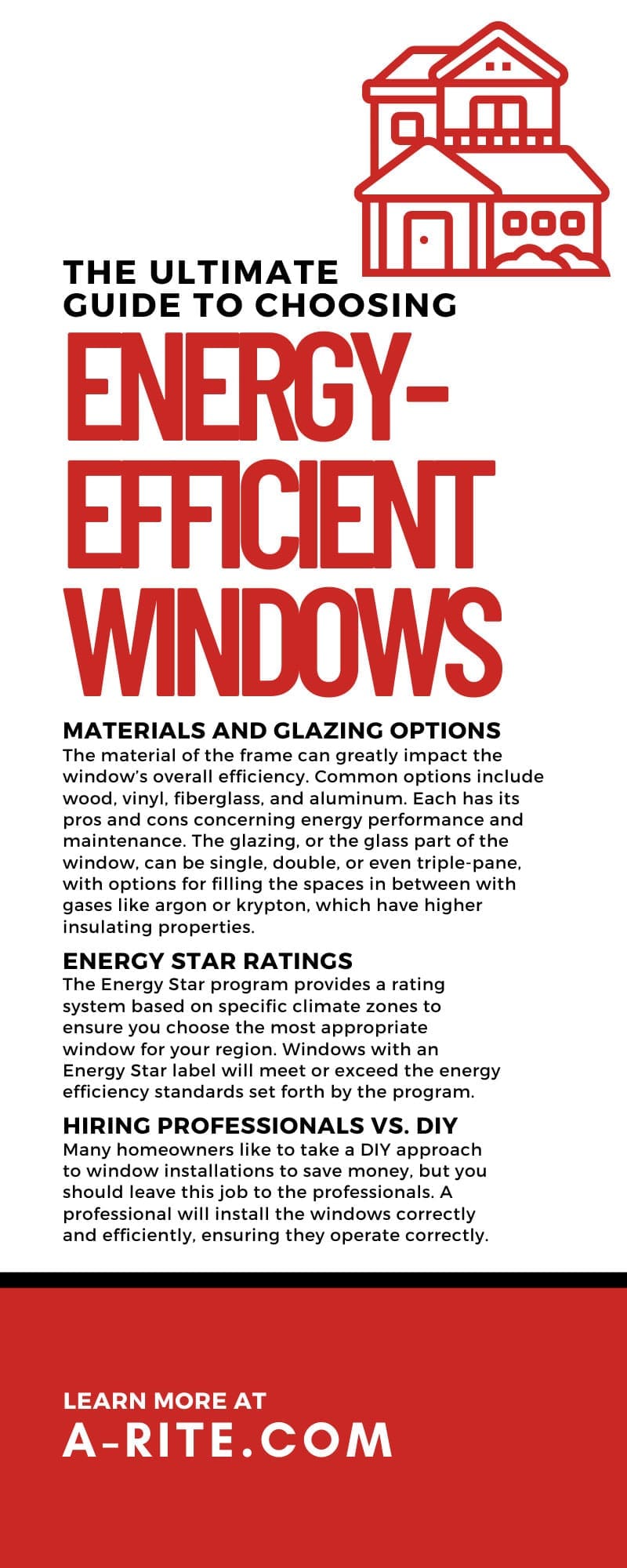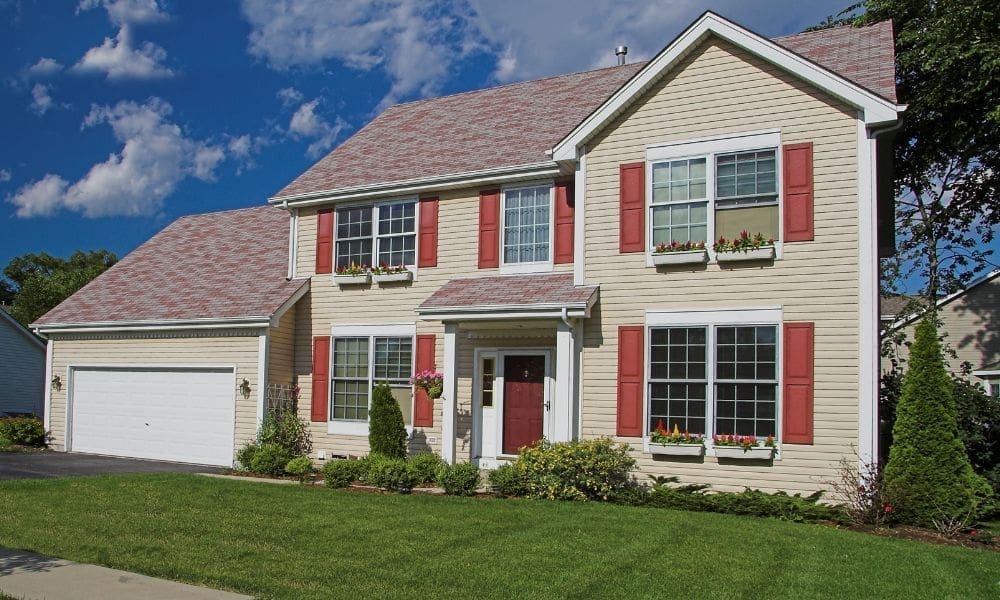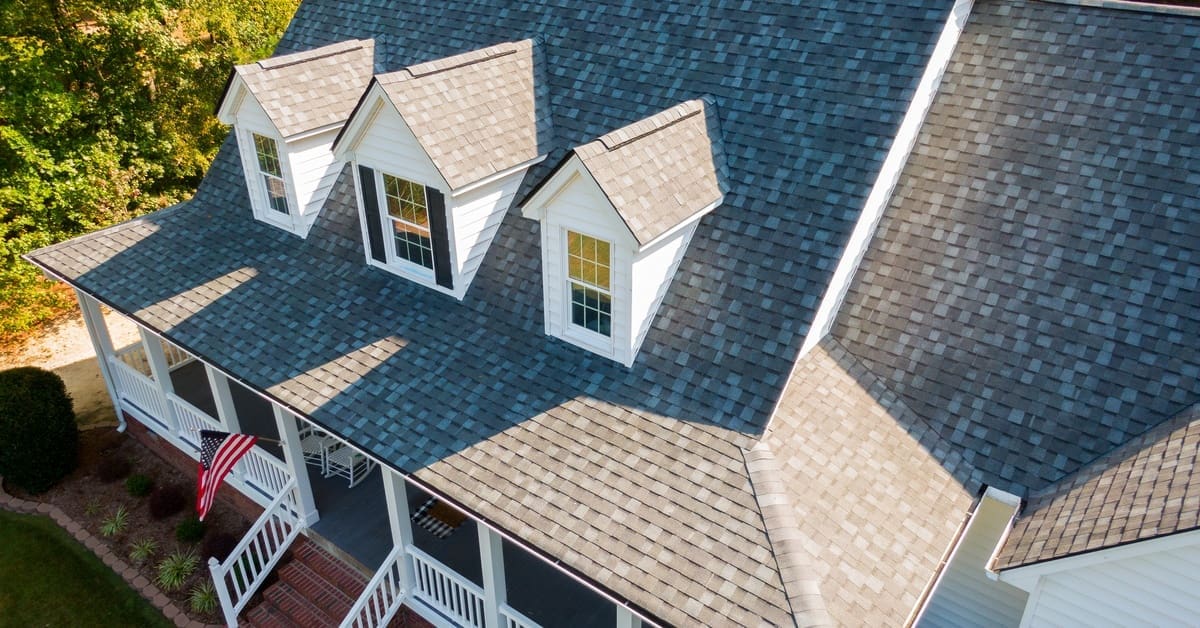Climate consciousness is increasingly becoming part of everyday life, and making eco-friendly choices at home is essential for a sustainable future. One significant aspect of home improvement with environmental implications is the selection of windows. Energy-efficient windows contribute to a greener planet and offer financial and health benefits to homeowners.
This comprehensive guide will help homeowners like you make the right decisions when choosing windows that promote energy efficiency. You’ll find everything you need to know here.
Diving Right In
Windows are a unique element of home design; they bridge the gap between the comfort of your indoors and the energy influences of the outside temperatures and light. Understanding their impact goes a long way in creating an environment you’re proud of that doesn’t harm the earth.
Imagine your home as a living, breathing organism. Energy-efficient windows act as lungs, allowing your home to ‘breathe’ while conserving energy and maintaining a comfortable internal climate. They do this by reducing the need for excessive heating, cooling, or lighting—all of which require substantial energy resources.
Understanding Energy Efficiency
When it comes to energy-efficient windows, it’s not just a label—it’s a science. These windows are barriers against the outdoor elements.
What Makes a Window Energy-Efficient
Key features that inherently improve energy efficiency include the window frame material, the type and number of panes, and the presence of specialized coatings that can reflect heat and UV rays.
Factors To Consider When Choosing Windows
There are several factors to weigh when selecting energy-efficient windows.
Materials and Glazing Options
The material of the frame can greatly impact the window’s overall efficiency. Common options include wood, vinyl, fiberglass, and aluminum. Each has its pros and cons concerning energy performance and maintenance. The glazing, or the glass part of the window, can be single, double, or even triple-pane, with options for filling the spaces in between with gases like argon or krypton, which have higher insulating properties.
U-Factor and Solar Heat Gain Coefficient (SHGC)
These two terms are crucial in evaluating a window’s thermal performance. The U-factor measures how well a window can keep heat from escaping a home, with lower numbers indicating better insulating properties. The SHGC measures how much heat from the sun a window can block, with a lower number signifying less heat penetration.
Energy Star Ratings
The Energy Star program provides a rating system based on specific climate zones to ensure you choose the most appropriate window for your region. Windows with an Energy Star label will meet or exceed the energy efficiency standards set forth by the program.
Benefits of Energy-Efficient Windows
Opting for energy-efficient windows delivers many financial and environmental benefits. Firstly, these windows significantly reduce utility bills by maintaining a more consistent indoor temperature, thus lowering the demand for heating and cooling systems. Over time, the energy savings can offset the initial investment, making them a cost-effective choice.
From an environmental standpoint, less energy consumption means reduced greenhouse gas emissions, contributing to the global effort against climate change. This reduction aligns with the growing societal emphasis on sustainable living, allowing homeowners to take actionable steps toward minimizing their carbon footprint.
Furthermore, energy-efficient windows can optimize indoor comfort. They minimize cold drafts and reduce hot spots by ensuring a steady internal environment. This also means less strain on heating, ventilation, and air conditioning systems, leading to potentially longer system lifespans and decreased maintenance costs.
Additionally, these windows can profoundly impact health and well-being by filtering out harmful UV rays, which can damage skin and fade furnishings, floors, and artwork. The reduced noise pollution is another underrated benefit, as these windows often offer superior sound insulation, creating a quieter and more serene home environment.
Installation Process
Installing energy-efficient windows correctly is a critical step in reaping their full benefits.
Hiring Professionals vs. DIY
Many homeowners like to take a DIY approach to window installations to save money, but you should leave this job to the professionals. A professional will install the windows correctly and efficiently, ensuring they operate correctly.
If you live in the Wausau, Wisconsin, area, turn to A-Rite. We offer experienced and reliable window installation in Wausau, Wisconsin. You’ll see why homeowners love us.
Maintenance Tips
Maintenance is key to preserving the longevity and efficiency of your energy-efficient windows.
Cleaning and Upkeep
Regular cleaning with mild soaps and water can keep your windows looking good and functioning properly. Periodically conduct inspections to address any wear and tear on the seals or frames. Properly maintained windows will function better and last longer, providing consistent energy savings over their lifespan.
Advanced Window Maintenance Tips
To ensure your energy-efficient windows continue to provide the best possible performance and longevity, consider these advanced maintenance tips.
Inspect Weatherstripping and Caulking Annually
Over time, weatherstripping and caulking can deteriorate, leading to air leaks that compromise the energy efficiency of your windows. An annual check will help you identify any areas that need repair or replacement, maintaining the integrity of your window’s insulation.
Check for Condensation and Moisture
Regularly inspect your windows for signs of condensation or moisture between panes, as this can indicate a seal failure. Early detection can prevent more significant issues, such as mold or structural damage, ensuring your windows remain effective and safe.
Lubricate Moving Parts
Lubricate window hinges, locks, and sliders yearly to maintain smooth operation and prevent wear. Use a silicone-based lubricant for best results, as it won’t attract dirt or dust.
Apply UV Protective Coatings
For additional protection against harmful UV rays, consider applying a UV protective film to your windows. This can extend the life of your windows’ frames and glazing and keep indoor furnishings from fading.
Professional Energy Efficiency Check
It might be valuable to have a professional perform an energy efficiency check on your windows every few years. They can assess any hidden issues affecting performance and suggest corrective measures to ensure your windows continue to provide optimal energy conservation.
Cost Considerations
The initial cost of energy-efficient windows may be higher than traditional windows, but you need to consider the bigger picture.
Initial Investment vs. Long-Term Savings
Energy-efficient windows are an investment that pays off over time. Consider the energy savings and potential increases in property value as part of the return on investment. Additionally, tax incentives or rebates might be available to offset the upfront cost.
Choosing energy-efficient windows can seem daunting amidst the wealth of information and options available. However, with a clear understanding of the elements that make windows energy-efficient, you can feel good about your choice.
By following the guidelines in this comprehensive guide, homeowners can be confident in their ability to choose, install, and maintain energy-efficient windows that will enhance their living space while contributing to a more sustainable planet. Start this path to holistic home energy efficiency today and experience the many benefits of a mindful window selection.




